When you hear the term “brand,” what comes to mind? Is it the logo of your favorite product, the slogan you can’t forget, or the feelings you associate with a company? For many, brand marketing is simply about creating recognition—making sure customers remember your name. However, there’s much more to it.
Table of Contents
Brand marketing goes beyond logos and catchphrases. It’s about shaping perceptions, creating emotional connections, and building long-term relationships that go far beyond a one-time purchase.
💡 Did you know that 4 out of 5 consumers feel that they first need to trust a brand before they are willing to make a purchase?
So, companies are no longer just selling products or services—they’re selling experiences, values, and trust. The brand itself has become the product in the minds of consumers. But what exactly does it mean to “build a brand,” and why is brand marketing such a powerful tool in driving business success? In this blog, we’ll break down everything you need to know about brand marketing—from its definition to how you can leverage it for long-term growth.
What is a Brand?
A brand is more than just a logo, slogan, or product name. It’s the intangible essence that defines how people perceive a company, its product or service, and its values. Think of a brand as the sum total of a company’s identity, including its brand identity, voice, vision, and the emotional connection it fosters with its audience.
To build a strong brand, companies must clearly define their purpose, align their messaging, and consistently deliver value. At its core, a brand is a promise—a commitment to delivering a certain quality, experience, or emotion every time a customer interacts with it.
What is Brand Marketing?

Brand marketing is the process of building awareness, trust, and loyalty for a company’s brand over time. It goes beyond promoting a product or service; instead, it focuses on creating a consistent narrative that resonates emotionally with the target audience.
Unlike other forms of marketing that aim for immediate results, brand marketing is a long-term strategy. It’s about fostering relationships and ensuring that customers remember your brand when making purchasing decisions, not just today but years down the line.
Because brand marketing takes time to show results, it requires consistent effort across various touchpoints. Businesses need to stay authentic, deliver value, and adapt their messaging to changing consumer needs.
Brand marketing is ongoing and can take many forms, from storytelling campaigns to collaborations with brand ambassadors, social media engagement, and even customer experiences. The aim is to create a cohesive message that communicates your brand identity and values while staying relevant in a dynamic marketplace.
The overarching goal of brand marketing is to grow the business—not just by increasing sales but also by building a foundation of trust and brand loyalty. A well-executed brand marketing strategy ensures that your company becomes a part of your audience’s lives, influencing not just their buying decisions but also their perception of your brand as a whole.
Also read: 44 Different Types of Marketing to Promote Your Brand
Difference Between Branding and Marketing

Branding: Defines who you are as a business. It’s about your brand identity, values, and the promise you make to customers.
Marketing: The tools and tactics you use to communicate your brand messaging and promote your offerings.
Which Comes First: Branding or Marketing?
Short answer: Branding comes first.
Long answer:
Branding defines your business’s core identity, including values, vision, and customer experience. It’s communicated through your logo, tone, and overall presentation. Marketing, on the other hand, spreads your brand’s message, drives sales, and engages customers through ads, content, and campaigns.
Without a clear brand identity, marketing efforts lack focus and consistency. Branding forms the foundation of your marketing strategy, ensuring that your campaigns align with your brand and effectively engage your audience. So, define your brand first, then market it.
Also read: Performance Marketing vs Brand Marketing: What’s the Difference?
What Are Brand Attributes?
Brand attributes are the specific qualities or characteristics that define a brand’s identity. These attributes go beyond just the product or service and shape how a brand is perceived in the market. They help convey the brand’s essence, its promises to customers, and the experiences it aims to deliver. These attributes can be functional, emotional, or symbolic, each playing a unique role in crafting a brand’s overall identity.
Essentially, brand attributes reflect what the brand stands for and how it connects with its audience, shaping its reputation, loyalty, and overall perception in the market. They are integral in making the brand memorable and meaningful to consumers.
Types of Brand Attributes
Brand attributes are the characteristics that define and differentiate a brand. They are the essence of what makes your brand memorable and relatable. These include:
- Physical Attributes: Visual elements like your logo, colors, and fonts.
- Emotional Attributes: The feelings your brand evokes in its audience.
- Functional Attributes: The tangible benefits or features of your product or service.
Key Brand Attributes That Shape Identity
To fully understand the range of attributes that define a brand, let’s delve deeper into some common ones. These attributes collectively shape a brand’s presence and customer experience, ensuring consistency and building a distinct brand identity.
- Visual Identity
Also called brand imagery, it includes the visual elements associated with the brand, such as its logo, colors, design, and overall aesthetic. These elements play a crucial role in ensuring that the brand is easily recognizable and aligns with its identity. They communicate a lot of the brand’s essence and help create an emotional response in the customer.
- Sensory Elements (Audio, Touch, Smell)
Certain brands have established distinctive sensory attributes that further strengthen their identity. Audio cues, such as jingles or distinctive sounds, can help reinforce brand recognition (think of McDonald’s “Ba Da Ba Ba Ba! I’m lovin’ it”). Similarly, touch and feel attributes like texture or comfort can make a brand’s products stand out—think of the luxurious feel of Apple packaging. Smell is another powerful sensory trigger; the distinct scent of a Starbucks store or a luxury hotel can enhance the customer experience and make the brand more memorable and warmth.
- Brand Messaging
This involves the tone and language used by a brand in its communications. Whether formal, casual, or conversational, the messaging conveys the personality and values of the brand, ensuring it resonates with its target audience. It reflects how the brand speaks to its customers and the kind of relationship it aims to build.
- Brand Personality
Brand personality refers to the human-like traits or characteristics attributed to the brand. These traits guide how customers perceive and connect with the brand on a personal level. Whether a brand comes across as friendly, professional, innovative, or bold, its personality shapes the emotional connection it has with consumers.
- Brand Behavior
Brand behavior is the way a brand responds to its environment, especially in customer interactions and crises. It’s about the actions a brand takes and how these actions align with the values and promises it makes. A brand that behaves consistently and in line with its core values strengthens its reputation and trustworthiness.
- Brand Consistency
Consistency refers to maintaining a uniform image and messaging across all touchpoints. A consistent brand experience ensures that customers have the same perception of the brand no matter where or how they interact with it. From the brand’s logo to its customer service, consistency reinforces trust and recognition.
- Brand Trustworthiness
Trust is one of the most important attributes for any brand. It reflects how much customers rely on the brand to deliver on its promises. A trustworthy brand is one that keeps its commitments, whether in product quality, customer service, or ethical standards. The more trustworthy a brand is, the more likely customers are to become loyal and repeat buyers.
- Brand Values
Brand values are the core beliefs or principles that the brand upholds. These values shape every aspect of the brand’s operations and interactions, influencing how customers perceive the brand’s commitment to certain ideals. Brand values could range from sustainability and diversity to innovation and customer-centricity.
- Brand Authenticity
Authenticity refers to how genuine and true to itself a brand is. An authentic brand doesn’t try to be something it’s not; it stays true to its values, its story, and its promises. Authenticity fosters a deeper emotional connection with customers, who value brands that are transparent, honest, and sincere.
- Brand Credibility
Credibility is closely linked to trust, as it reflects how reliable and believable a brand is. A credible brand has a solid reputation and is perceived as a reliable provider of quality products or services. This attribute helps to overcome skepticism and build customer confidence.
- Brand Uniqueness
Uniqueness defines what makes a brand stand out from its competitors. It’s what differentiates a brand in a crowded market. A unique brand offers something distinct—whether it’s a particular feature, a unique story, or a remarkable customer experience. Uniqueness helps a brand carve its own space in the market.
- Brand Fulfillment
Fulfillment refers to a brand’s ability to deliver on its promises. Whether it’s about quality, customer service, or meeting expectations, fulfillment ensures that customers feel satisfied with their experience and are likely to return. A brand that consistently fulfills its promises builds trust and loyalty over time.
What is Brand Equity?
Brand equity refers to the value a brand adds to a company through consumer perception. It represents the intangible assets a brand holds beyond just its physical products or services. Strong brand equity results from positive consumer experiences and a solid reputation built over time. It shapes how customers perceive the brand and influences their purchasing decisions.
Brand equity is built on several factors, including brand awareness, customer trust, emotional connection, and the overall reputation the brand holds in the marketplace. It directly impacts a company’s ability to charge premium prices, retain loyal customers, and expand into new markets. Strong brand equity is a competitive advantage that companies leverage to grow and sustain long-term business success.
Also read: Keller’s Brand Equity Model: What it is and how to use it
What is a Brand-Consumer Relationship?
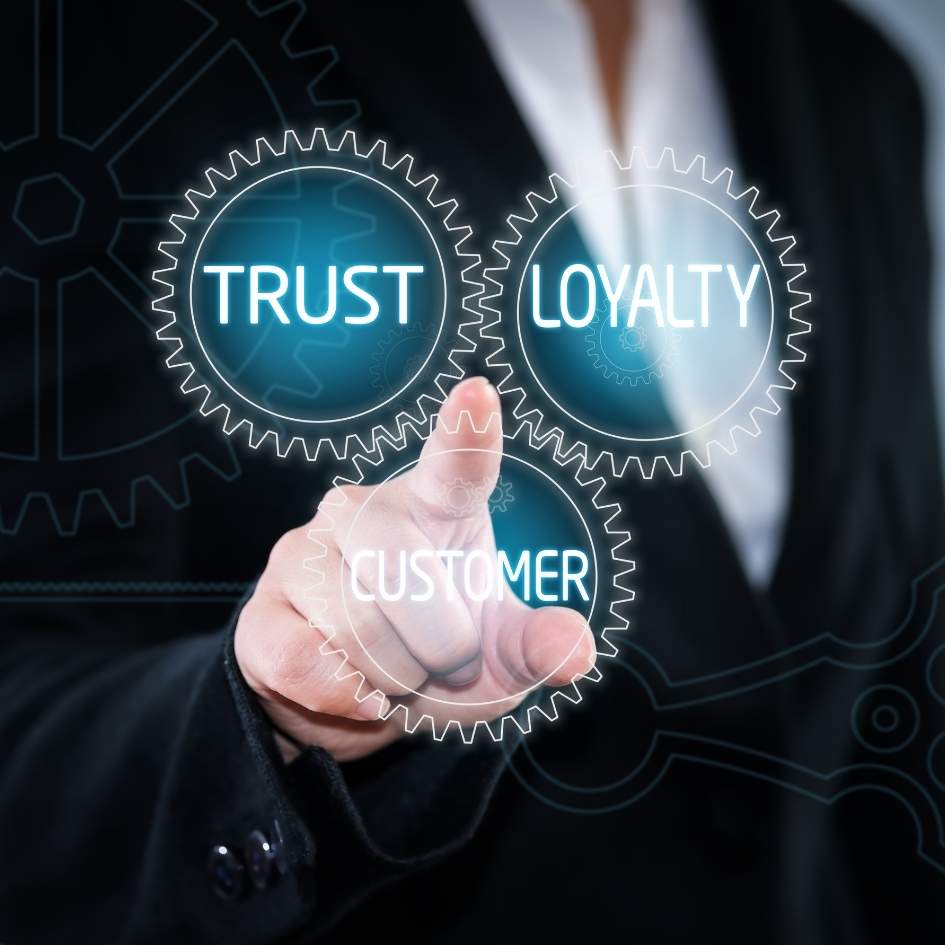
A brand-consumer relationship is the bond that forms between a brand and its customers, driven by both emotional and practical connections. It is not just about the transactional aspects of purchasing products or services; it’s about creating a deeper, more meaningful connection with consumers. When a brand successfully builds such a relationship, it often leads to brand loyalty, advocacy, and repeat business. A strong brand-consumer relationship is the foundation of customer retention, and it can turn customers into brand ambassadors who advocate for the brand without being prompted.
Today brands that establish a strong bond with their consumers tend to enjoy a higher level of trust, which significantly impacts their long-term success.
Key Elements of a Strong Brand-Consumer Relationship
1. Consistency
A brand must consistently meet customer expectations in product quality and service. Consumers value reliability and building long-term trust.
Example: Amul consistently delivers high-quality dairy products, earning consumer loyalty with its dependable offerings and memorable advertising.
2. Engagement
Brands should engage customers across multiple platforms to create meaningful connections.
Example: Zomato interacts with users on social media, turning casual customers into loyal ones through relatable, engaging content, such as their “Mission Diwali” campaign.
3. Personalized Experiences
Personalization shows customers that a brand understands their needs and preferences.
Example: Myntra uses data analytics to offer tailored fashion recommendations, enhancing customer loyalty by providing personalized deals and styling tips.
Why Branding is Important
Branding goes beyond logos or slogans; it’s about how customers perceive your business and the experience you deliver. It shapes customer behavior, increases recognition, and fosters loyalty.
1. Creates Brand Recognition
Branding makes your business memorable, helping consumers easily identify you among many competitors, which influences their buying decisions.
2. Builds Trust and Credibility
A strong brand builds trust, making customers more likely to purchase, recommend, and stay loyal.
3. Differentiates You from Competitors
Branding helps set your business apart, highlighting what makes you unique and why customers should choose you.
4. Fosters Customer Loyalty
A solid brand cultivates long-term relationships with customers, turning them into advocates for your business.
5. Supports Marketing Efforts
Branding provides a foundation for consistent marketing campaigns that reinforce your message and boost recognition.
6. Increases Business Value
A strong brand enhances your business’s value, attracting investors and increasing market worth.
7. Enhances Emotional Connection
Branding creates emotional bonds, making customers more likely to stay loyal and recommend your brand.
8. Guides Business Decisions
Clear branding helps guide product development, customer service, and overall business strategy.
9. Improves Customer Experience
Branding shapes the entire customer journey, ensuring a cohesive and positive experience.
10. Provides a Competitive Advantage
A strong brand helps you stand out in the market, giving you a competitive edge and resilience in tough times.
Building a Brand Strategy: A Step-by-Step Guide
Building a brand strategy is a crucial process that defines how your business will present itself to the world, attract customers, and stand out in the marketplace. It requires careful planning, research, and execution. Let’s break down each step of the process in detail.
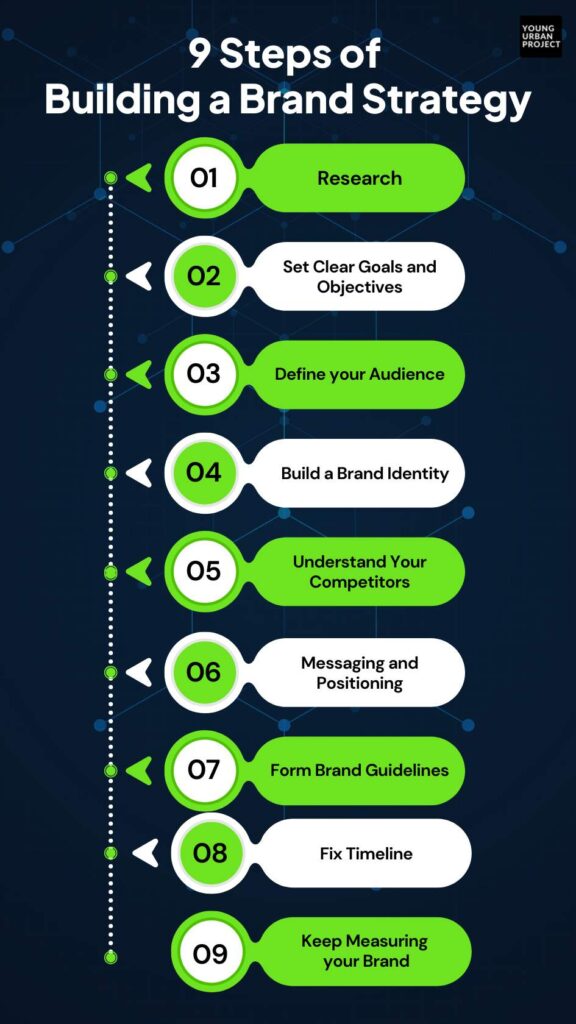
1. Conduct Research
Research is the foundation of any strong brand strategy. It involves understanding who your audience is, what they want, and how they behave. Without proper research, it’s impossible to craft an effective brand that resonates with your customers.
What to Do:
- Audience Demographics: Gather data on the age, gender, location, income, and education levels of your target market. This will help you tailor your brand’s tone and messaging to suit their needs.
- Customer Preferences and Pain Points: Understand the problems your target audience faces and what solutions they are looking for. Surveys, customer feedback, and social listening can be helpful tools here.
- Analytics: Use tools like Google Analytics, social media insights, and CRM systems to track customer behavior and gather quantitative data on their preferences and online activity.
💡 Tip: Create buyer personas based on your research. These are fictional representations of your ideal customers that you can use to guide your branding efforts.
2. Set Clear Goals and Objectives
Setting clear, measurable goals is essential for tracking the success of your brand strategy. Whether you’re aiming to increase brand awareness, drive sales, or foster customer loyalty, goals provide direction and purpose.
What to Do:
- SMART Goals: Ensure your goals are Specific, Measurable, Achievable, Relevant, and Time-bound. For example, “Increase brand awareness by 20% in the next six months” or “Grow social media engagement by 15% over the next quarter.”
- KPIs: Identify key performance indicators (KPIs) that will help you measure progress toward your goals, such as website traffic, conversion rates, or social media engagement.
💡 Tip: Break down long-term goals into smaller, short-term objectives. This makes them more manageable and allows for easier tracking.
3. Define your Audience
Understanding your ideal customer is crucial. A well-defined audience ensures that your brand messaging resonates and that your marketing efforts are targeted toward the right people.
What to Do:
- Buyer Personas: Based on your research, create detailed buyer personas that outline your audience’s demographics, interests, challenges, and buying behavior.
- Segmentation: If your target market is diverse, segment it into groups based on shared characteristics. This allows you to tailor your messaging to different sub-groups.
💡 Tip: Use tools like Google Analytics or social media insights to better understand the behaviors and preferences of your audience.
4. Build a Brand Identity
Your brand identity is the visual and verbal representation of your brand. It includes your logo, color palette, typography, and the tone of voice you use in your communications. This identity should reflect your brand’s core values and resonate with your target audience.
What to Do:
- Visual Elements: Develop a logo, color scheme, typography, and other visual elements that align with your brand’s personality. These should be consistent across all platforms to create recognition.
- Brand Voice: Decide on the tone and language you’ll use in your communications. Is your brand friendly, formal, humorous, or authoritative? Make sure this aligns with your audience’s expectations and your brand’s values.
💡 Tip: Create a brand style guide that outlines all your brand identity elements and rules for how they should be used across different channels.
5. Understand Your Competitors
Competitor analysis helps you understand the landscape in which your brand operates. By identifying the strengths and weaknesses of your competitors, you can identify gaps in the market and position your brand more effectively.
What to Do:
- Competitor Research: Identify your key competitors and study their branding strategies. What do they do well, and where do they fall short? What differentiates your brand from theirs?
- Market Gaps: Look for areas where competitors are not meeting the needs of customers. This can help you find opportunities to position your brand as the solution to those unmet needs.
💡 Tip: Use tools like SWOT analysis (Strengths, Weaknesses, Opportunities, and Threats) to evaluate your competitors and their branding strategies.
6. Messaging and Positioning
Brand messaging is the language you use to communicate your brand’s values, mission, and unique selling proposition (USP) to your audience. Positioning defines how you want your brand to be perceived in the market relative to your competitors.
What to Do:
- Unique Value Proposition: Clearly define what makes your brand unique. Why should customers choose your brand over others? This should be the cornerstone of your messaging.
- Core Messaging: Develop a clear, concise message that reflects your brand’s mission and values. This will be used consistently across all channels and marketing materials.
- Positioning Statement: Write a positioning statement that outlines your brand’s unique position in the market, who your target audience is, and what makes your brand different from competitors.
💡 Tip: Ensure that your messaging is aligned with both your brand values and your audience’s needs.
7. Form Brand Guidelines
Brand guidelines are essential for maintaining consistency in how your brand is presented across all platforms. They ensure that every communication, whether it’s an ad, social media post, or website, stays true to your brand identity.
What to Do:
- Design Guidelines: Specify how your logo, color palette, and typography should be used across different mediums. This ensures uniformity in your visual presentation.
- Tone and Voice: Establish rules for your brand’s tone and language. This will help maintain consistency in how you communicate with your audience, regardless of the platform.
- Brand Usage: Set rules for how third parties, such as partners or media outlets, can use your brand’s assets.
💡 Tip: Regularly review and update your brand guidelines to ensure they remain relevant as your brand evolves.
8. Fixed Timeline
It makes sure that your brand strategy is executed systematically and efficiently. It helps you plan each step of your brand’s launch or rebranding, ensuring that every aspect of your brand is introduced or updated on time.
What to Do:
- Phases of Launch: Break your brand launch or rebranding into phases (e.g., initial teaser, official launch, ongoing promotion). This helps ensure a smooth rollout without overwhelming your team or audience.
- Set Milestones: Set specific deadlines for key actions (e.g., website update, social media announcement, advertising launch). This will help you stay on track and measure progress.
💡 Tip: Use project management tools like Trello, Asana, or Monday.com to create a detailed timeline with tasks and deadlines for each phase.
9. Keep Measuring your Brand
Brand measurement helps you track the effectiveness of your brand strategy. By evaluating your brand’s performance, you can determine what’s working, what isn’t, and where improvements are needed.
What to Do:
- Metrics to Track: Identify the key metrics that align with your brand goals. This could include brand awareness, customer engagement, conversion rates, or sales growth.
- Data Analysis: Use analytics tools to track and measure these metrics regularly. Make adjustments to your strategy based on the data you gather.
- Customer Feedback: Regularly solicit feedback from customers through surveys, reviews, and social media to understand how your brand is perceived and where you can improve.
💡 Tip: Set up automated reports using Google Analytics or social media analytics tools to track key metrics in real time.
How to Measure Your Brand Marketing Efforts?
Measuring brand marketing effectiveness is crucial to assess strategy success and identify areas for improvement. Unlike direct-response marketing, which has immediate metrics, brand marketing requires tracking long-term value, customer perception, and brand health. Here are key metrics for tracking your brand marketing success:
1. Brand Awareness
It measures how many people recognize your brand. Use surveys, social listening, and website traffic to track awareness.
2. Brand Recognition
This refers to how easily consumers identify your brand’s visual elements. Conduct logo recognition tests and monitor engagement with visual content.
3. Brand Sentiment
It reflects the overall feelings customers have toward your brand. Analyze social media mentions, customer feedback, and sentiment analysis tools.
4. Brand Loyalty and Retention
Loyal customers are more likely to repurchase. Track customer retention, lifetime value (CLV), and Net Promoter Score (NPS).
5. Brand Engagement
Active customer interaction with your brand. Measure social media engagement, website analytics, and email open rates.
6. Sales Growth Linked to Branding Efforts
Monitor sales trends, attribution models, and new customer acquisition to assess the impact of brand marketing on revenue.
7. Brand Advocacy
Measures how likely customers are to recommend your brand. Track referrals, word-of-mouth, and brand ambassadors.
8. Customer Satisfaction (CSAT)
High satisfaction indicates your brand marketing is working. Use surveys and post-purchase feedback to gauge satisfaction.
9. Brand Health Metrics
Evaluate the overall performance of your brand with metrics like market share and brand equity tracking.
Best Brand Marketing Strategies in the Business
A strong brand marketing strategy is the backbone of any successful business. It not only helps differentiate your brand in a competitive market but also builds lasting relationships with your audience. The most effective brand marketing strategies focus on creating a deep connection with customers, maintaining consistency, and delivering value over time. Here are some of the best brand marketing strategies used by top businesses across industries:
1. Storytelling
Storytelling is one of the most powerful brand marketing strategies. It allows brands to connect emotionally with their audience by sharing authentic, relatable, and inspiring stories. By weaving your brand’s message into a compelling narrative, you create a deeper bond with your customers, making them more likely to engage and stay loyal.
For example, LEGO uses storytelling to transform simple bricks into a symbol of creativity and endless possibilities. Through movies, games, and theme parks, the brand invites all ages to imagine, build, and create their own stories. By promoting play and problem-solving, LEGO has built a timeless narrative that resonates with dreamers and builders worldwide.
Key Benefits:
- Builds emotional connections.
- Makes the brand more relatable and human.
- Increases customer retention.
2. Brand Positioning
Brand positioning is all about carving out a unique place in the market for your brand. It involves identifying what makes your brand different and why customers should choose it over competitors. A clear, distinct brand positioning helps customers understand what your brand stands for and why it matters.
Apple’s brand positioning focuses on simplicity, elegance, and innovation. By positioning itself as a premium tech brand with a user-friendly interface, Apple has created a loyal customer base that values aesthetics, performance, and ease of use.
Key Benefits:
- Sets you apart from competitors.
- Creates a memorable impression.
- Clarifies your brand’s unique value proposition.
3. Consistency Across Channels
Consistency is key to building a strong brand presence. Whether it’s your visual identity, tone of voice, or messaging, maintaining consistency across all platforms helps reinforce your brand and make it easily recognizable. This applies to every touchpoint, from social media to packaging and customer service.
Key Benefits:
- Reinforces brand identity.
- Builds trust and reliability.
- Enhances brand recognition.
4. Influencer Marketing
Collaborating with influencers who align with your brand values and target audience can elevate your brand marketing efforts. Influencers bring credibility and a loyal following, making it easier for your brand to reach new audiences and build awareness.
Myntra, a popular Indian e-commerce platform, has worked with top fashion influencers and celebrities to promote their brand. By partnering with influencers who resonate with their target demographic, Myntra has successfully built its presence as a trendsetter in the fashion e-commerce industry.
Key Benefits:
- Expands your reach to new audiences.
- Builds credibility and trust through association.
- Drives engagement and conversions.
5. User-Generated Content (UGC)
User-generated content (UGC) is one of the most authentic forms of brand marketing. Encouraging customers to share their experiences, photos, or videos featuring your products can increase trust and engagement. It also allows you to showcase real-world use cases of your brand, which can be more impactful than traditional advertising.
Lays’ #SmileDekeDekho campaign featured influencers with their smiles printed on Lays packets. The influencers encouraged their fans to snap pictures with the packets and submit their entries, creating a wave of user-generated content.
Key Benefits:
- Increases brand trust and authenticity.
- Engages customers and encourages them to share their experiences.
- Provides valuable social proof.
6. Brand Partnerships and Collaborations
Strategic partnerships with other brands, influencers, or organizations can help elevate your brand’s visibility and reach new customer bases. Collaborations with like-minded companies or personalities can create buzz, generate excitement, and introduce your brand to a broader audience.
Key Benefits:
- Expands your customer base.
- Strengthens your brand’s credibility.
- Leverages the strengths of another brand or influencer.
7. Content Marketing
Content marketing helps establish your brand as a thought leader in your industry. By consistently producing valuable, informative, and engaging content, you can build trust, educate your audience, and drive traffic to your website. Blogs, videos, podcasts, and social media posts all contribute to a well-rounded content strategy.
Key Benefits:
- Establishes your brand as an authority.
- Engages and educates your target audience.
- Supports long-term brand loyalty and growth.
8. Personalization
Personalized brand marketing involves tailoring your messages and offers based on individual customer preferences, behaviors, and past interactions. By delivering relevant and timely content or products to your audience, you can increase engagement, conversion rates, and customer satisfaction.
Amazon’s recommendation engine is a prime example of personalized marketing. Based on browsing history and previous purchases, Amazon suggests products tailored to individual preferences, driving conversions and repeat business.
Key Benefits:
- Increases relevance and engagement.
- Improves customer experience and satisfaction.
- Drives conversions by catering to specific needs.
Mistakes to Avoid in Brand Marketing Strategy
Building a brand marketing strategy requires precision and understanding of your market. Avoid these common pitfalls to strengthen your brand identity:
1. Neglecting Competitor Analysis
Not knowing your competitors can result in missed opportunities. Use SWOT analysis to understand their strengths and weaknesses and differentiate your brand.
2. Inconsistent Branding
Inconsistent messaging across channels confuses your audience. Create brand guidelines for visuals, tone, and messaging to maintain consistency.
3. Lack of Long-Term Vision
Focusing on short-term gains can hinder brand growth. Set long-term goals and align campaigns with your brand’s legacy.
4. Greenwashing
Claiming sustainability without action damages credibility. Ensure your eco-friendly efforts are genuine and share real proof.
5. Overdoing Virtue Signaling
Inauthentic promotion of social causes can alienate your audience. Support causes that align with your brand values authentically.
6. Chasing Irrelevant Trends
Jumping on every trend can dilute your brand identity. Evaluate trends for alignment with your brand’s voice and audience before adopting them.
Trends in Brand Marketing
Brand marketing is evolving with technology, consumer behavior, and societal changes. Here are key trends shaping its future:
1. Branding with a Purpose
Consumers want brands that stand for something. Purpose-driven brands, like Tata Motors promoting sustainability with electric vehicles, build emotional connections and loyalty.
2. Immersive Brand Experiences
Consumers expect interactive experiences. Brands like IKEA use AR to let customers visualize products in their homes, creating deeper engagement.
3. Data-Driven Personalization
Brands use data to tailor experiences and offers. Amazon and Swiggy excel by recommending products and services based on user behavior.
4. Leveraging Cutting-Edge Technology
AI, ML, and blockchain help brands optimize campaigns and personalize customer experiences at scale, enhancing efficiency and innovation.
5. Dominance of Video Marketing
Video content, especially on platforms like Instagram and YouTube, helps brands engage audiences more dynamically and tell their stories effectively.
6. Omnichannel Presence
Brands must maintain a consistent experience across all touchpoints, ensuring seamless interactions across devices and platforms.
7. Compelling Branded Content
Instead of direct promotion, brands focus on creating valuable content that entertains, informs, or inspires, building trust and credibility.
8. Exploring VR and the Multiverse
Virtual reality and the multiverse offer new, immersive ways for brands to innovate and engage consumers in digital environments.
9. Influencer Marketing
Partnering with influencers helps brands reach targeted audiences by leveraging trust and loyalty within specific communities.
Examples of effective brand marketing
1. TATA Group: Trust, Legacy, and Quality
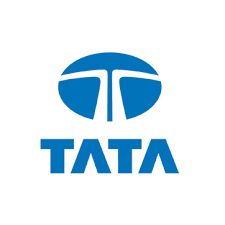
TATA Group’s brand identity is rooted in a rich legacy of trust, integrity, and quality. Known for its diverse range of businesses—from automobiles to hospitality to steel—the TATA brand is synonymous with a long-standing commitment to excellence and ethical practices. The brand’s slogan, “TATA: The Heart of India,” embodies its dedication to making a positive impact on society and improving the lives of its customers. Whether it’s TATA Motors with its reliable vehicles or TATA Steel with its high-quality manufacturing, the TATA name commands respect and admiration in India. Moreover, the group’s emphasis on social responsibility, like its philanthropic initiatives through the TATA Trusts, has strengthened its brand’s emotional appeal with Indian consumers.
2. Tesla: Innovation and Sustainability
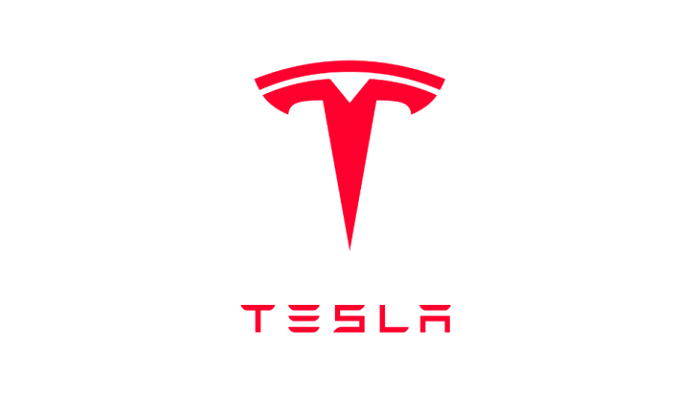
Tesla’s brand identity revolves around innovation, cutting-edge technology, and sustainability. The sleek, futuristic logo and minimalist design of their cars, along with their commitment to clean energy, reinforce their position as a leader in the electric vehicle market. Tesla’s brand reflects their dedication to advancing sustainable practices, appealing to eco-conscious consumers.
3. IKEA: Simplicity and Affordability
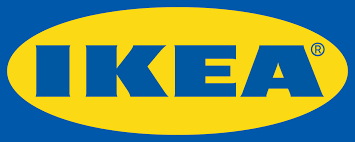
IKEA’s brand marketing emphasizes practicality, simplicity, and affordability. With its recognizable blue and yellow colors and straightforward design, IKEA has established itself as a go-to brand for affordable, modern furniture. The brand focuses on delivering a clear and reliable shopping experience, from its stores to its product catalog, aligning with customer expectations.
4. Walmart: Value Through Consistent Pricing
Walmart positions itself with the tagline “Everyday Low Prices.” The brand’s focus on keeping operating costs low allows it to pass on savings to customers. This consistent pricing strategy has made Walmart a trusted name for consumers looking for value and affordability, positioning it as a leader in the retail market.
5. Apple: Differentiation through Design and Innovation
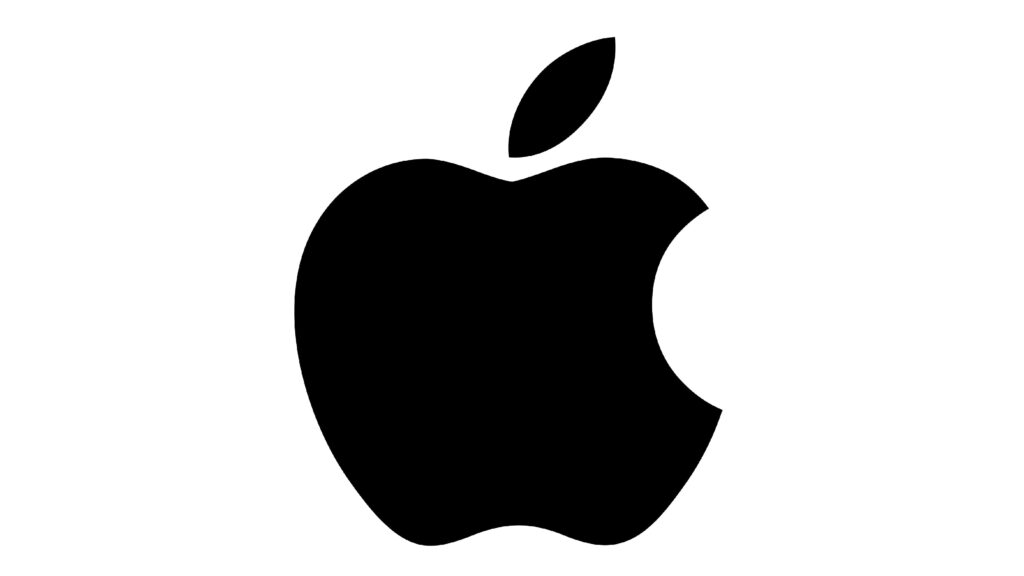
Apple stands out through its sleek design, intuitive interfaces, and seamless ecosystem of products. The brand’s focus on high-quality, innovative technology has fostered a premium experience. Customers are drawn to Apple not just for the products, but for the status and user-friendly experience the brand offers, positioning itself as the leader in personal technology.
6. Patagonia: Environmental Sustainability

Patagonia’s brand is deeply rooted in its commitment to environmental sustainability and conservation. The brand’s mission, “to save our home planet,” shapes its marketing, from using recycled materials to encouraging customers to buy less through repair and recycling programs. Patagonia’s clear environmental stance resonates with eco-conscious consumers, positioning it as a responsible brand.
7. Mahindra: Toughness and Versatility
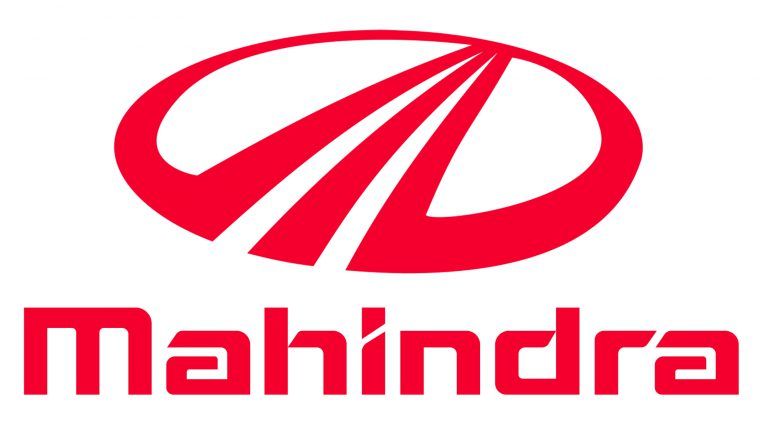
Mahindra has successfully built its brand identity around toughness, reliability, and versatility, especially with its range of SUVs and tractors. The brand’s positioning speaks to the spirit of adventure and resilience. Mahindra’s advertisements emphasize strength, whether it’s conquering rugged terrains or supporting Indian farmers with efficient tractors. Mahindra also stands out with its “Rise” campaign, which focuses on the brand’s efforts to make a positive impact on people’s lives, particularly in rural and semi-urban areas. This deep-rooted connection to both urban and rural India has made Mahindra a brand trusted for its quality and performance.
8. Maggi: Comfort and Convenience

Maggi has successfully positioned itself as a quick, easy, and comforting meal solution for busy families, students, and individuals. The brand’s identity revolves around being a trusted, go-to snack or meal, especially when people are craving something warm and satisfying. The famous “2-minute” tagline has become a part of India’s cultural fabric, with Maggi being synonymous with convenience. Through consistent advertising and emotional storytelling, Maggi has established itself as a beloved comfort food, trusted across generations.
9. Mailchimp: A Fun and Approachable Voice

Mailchimp’s brand voice is friendly, witty, and approachable. By using simple language and humor, the brand demystifies the complexities of marketing automation. Whether it’s through their website, emails, or customer support, Mailchimp maintains a consistent and engaging tone that makes it easy for users to connect with the product and the company.
10. Nike: Inspirational and Empowering Messaging
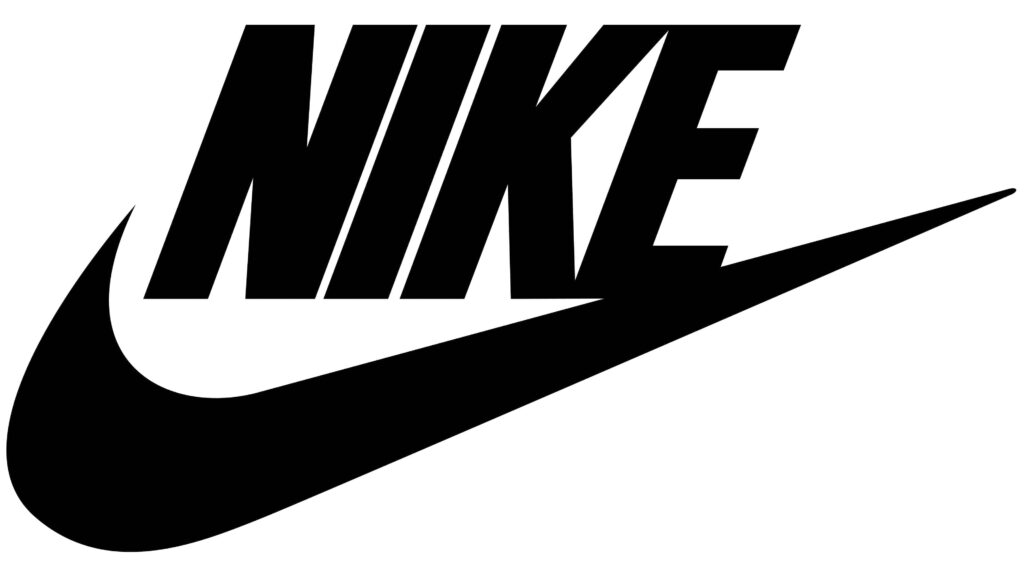
Nike’s brand voice is bold, motivational, and inspiring. The brand’s messaging empowers individuals to overcome obstacles, achieve greatness, and embrace their inner strength. Whether in advertisements with athletes or in practical product descriptions, Nike’s tone consistently focuses on achievement, positioning itself as the brand for high-performance and self-confidence.
11. Dove: Empathetic and Inclusive Messaging

Dove’s brand voice is empathetic, supportive, and inclusive, particularly in campaigns that emphasize real beauty and body positivity. By focusing on building self-esteem and confidence, Dove appeals to customers who value authenticity and self-acceptance, strengthening emotional connections with its audience.
12. Starbucks: Personalized and Consistent Experience

Starbucks ensures a consistent brand experience across all touchpoints, from the in-store experience to its mobile app and social media. The brand is known for its personalized service, such as writing customers’ names on cups, and its rewards program. Starbucks’ ability to maintain this consistency builds a loyal community of coffee lovers who connect with the brand on a personal level.
13. Disney: Magical Experiences
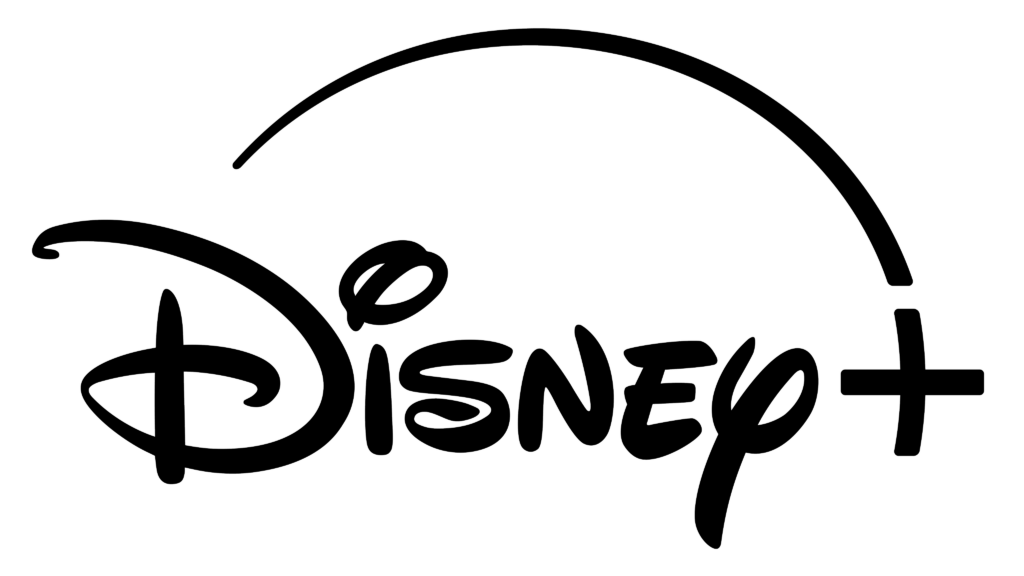
Disney has mastered the art of creating immersive, magical brand experiences. From their theme parks to movies and merchandise, every touchpoint is designed to feel part of a larger story. Disney’s attention to detail and customer service helps reinforce its brand as a trusted source of joy and wonder, deepening customer loyalty across generations.
14. Royal Enfield: Adventure and Legacy

Royal Enfield’s brand identity revolves around adventure, freedom, and legacy. Known for its iconic motorcycles, the brand targets those who seek a bold, rebellious lifestyle. Its classic bike designs, coupled with the “Made Like a Gun” tagline, emphasize durability and strength. Royal Enfield connects with both nostalgic older generations and young thrill-seekers through a combination of vintage appeal and modern tech. The brand’s focus on adventure, exploration, and a strong community has made it a symbol of freedom in India, creating a loyal, passionate following.
15. ICICI Bank: Customer-Centric Innovation

ICICI Bank has established a brand identity built around customer-centricity and technological innovation. The bank’s consistent messaging focuses on providing financial solutions that are accessible and efficient for all. Through its digital platforms, including mobile banking and quick loan processes, ICICI Bank caters to the growing demand for seamless, tech-savvy financial services. By positioning itself as a reliable, progressive brand, ICICI has maintained strong customer loyalty, making banking convenient, innovative, and customer-first in India.
Conclusion
Branding is the foundation of any successful business, shaping how your customers perceive your company and influencing their purchasing decisions. From creating brand recognition and building trust to differentiating your business in a competitive market, branding plays a pivotal role in fostering loyalty, guiding marketing strategies, and even increasing business value. By understanding the key elements of brand-consumer relationships, such as consistency, engagement, and personalized experiences, brands can build lasting connections with their audiences. As we’ve explored, a clear and purposeful brand identity is essential for navigating today’s market, ensuring your business stands out and thrives. Investing in your brand is not just about attracting customers—it’s about creating a lasting impact that resonates with them and drives long-term success.
FAQs: Brand Marketing
1. What are the three C’s of brand marketing?
The three C’s of brand marketing are Company, Customers, and Competitors. They focus on understanding your brand’s strengths, your target audience’s needs, and the competitive landscape.
2. What are the 4 P’s of a brand?
The 4 P’s of brand marketing are Product, Price, Place, and Promotion. These elements help shape your brand’s offering and market strategy.
3. What is a brand marketing strategy?
A brand marketing strategy outlines how to promote and position your brand in the market to achieve long-term success. It includes defining your brand’s identity, values, and messaging.
4. What is the importance of brand purpose in marketing?
A brand’s purpose is the core reason it exists beyond making money. It aligns the brand with consumer values and helps build emotional connections with customers.
5. Is branding advertising?
Branding is not the same as advertising. Branding is the process of building a brand’s identity, while advertising focuses on promoting products or services to a target audience.
6. Is brand marketing a good career?
Yes, brand marketing is a great career for those interested in creating impactful brands and connecting with consumers. It offers opportunities for creativity, strategic thinking, and leadership.
7. Is brand marketing dead?
No, brand marketing is not dead. In fact, it is more important than ever in a crowded market, where standing out and building loyalty are key to success.
8. Does branding fall under marketing?
Yes, branding is a part of marketing. While marketing focuses on promoting products and services, branding focuses on creating and maintaining a brand’s identity.
9. What is Top of Mind Brand Awareness and How to Measure It?
Top of Mind Brand Awareness refers to how easily consumers recall your brand when thinking about a product category. It’s typically measured through surveys or studies asking consumers to name brands in a specific category.

